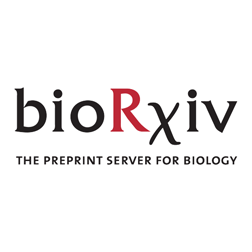From the lab of Helene Schmidt:
"Large-scale 3D EM connectomics dataset of mouse hippocampal area CA1", Corteze et al. 2025
https://www.biorxiv.org/content/10.1101/2025.04.04.647285v1.full
Spectacular.

From the lab of Helene Schmidt:
"Large-scale 3D EM connectomics dataset of mouse hippocampal area CA1", Corteze et al. 2025
https://www.biorxiv.org/content/10.1101/2025.04.04.647285v1.full
Spectacular.

I keep going back to this question about #TemporalCreditAssignment and #HippocampalReplay:
As an "agent" you want to learn the value of places and which places are likely to lead to reward;
-1) if a place leads to higher than expected reward, you'll want to propagate back the reward info from the reward throughout the places that led to the reward. If replay does that you should see an increase of replay at a new reward site and the replay sequences should start at the reward and reflect what you just did to reach it. Right?
-2) if a place leads to lower than expected reward, you'll also want to propagate that lowered value, pretty much in the same way, so if replay does that you should see a similar replay rate and content for increased OR decreased reward sites. Right?
-3) if a place has had unchanged reward for a while and you're just in exploitation mode (just going there again and again because you know that's the best place to go to in the environment) then you shouldn't need to update anything and replay rate should be quite low at that unchanged reward side. Right?
That's not at all what replay is doing IRL, so does that mean replay is not used for temporal credit assignment? Or did I (very likely) miss something?
Are hippocampal representations of other people anchored to #SelfKnowledge? This study shows other people’s preferences are represented relative to personal preferences in the #hippocampus & dorsomedial prefrontal cortex when retrieving relational social knowledge @PLOSBiology https://plos.io/449XRcD
#PlaceCells often have elongated place fields next to an environment's boundaries.
Is there any paper where this phenomenon is directly predicted by the #SuccessorRepresentation model of place cells?
#Gedächtnis: Schon einjährige Kinder können Erlebtes speichern, so Studie in Science. Der #Hippocampus zeige früher Aktivität als bisher angenommen. Expert:innen erklären, was fehlt, um das Rätsel der fehlenden Kindheitserinnerungen zu lösen: https://www.sciencemediacenter.de/angebote/erste-erinnerungen-bei-kleinkindern-25057/?mtm_campaign=mastodon&mtm_kwd=erste-erinnerungen-bei-kleinkindern-25057
SciTech Chronicles. . . . . . . . .Mar 21st, 2025
#MRI #amnesia #hippocampus #engrams #sustainable, low-carbon #waste #Portland #TGF #relativistic #electrons #positrons #safety-critical #confidence-sharing #dyad #spatiotemporal #biodegradable #gene #promoter #D-LDH

Thinking about #PlaceCells and the #Hippocampus, do you think results in rats (/rodents) generalise well to humans, and conversely?
Marveling the Mysteries of Memory: How Our Brain Reactivates and Perceives Sensory Experiences
#MemoryMagic #SensoryPerception #Neuroscience #Hippocampus #CognitiveFunction #Neuroplasticity #OlfactorySenses #PTSD #EmotionalHealth #BrainScience #CognitiveDysfunction #MindAndBody #Neurotransmission #MemoryReactivation #MentalHealthMatters
Exploring the Mind: The Quirks of Cognitive Theories & Behavioral Pharmacology!
#CognitiveScience #BehavioralPharmacology #Hippocampus #MentalWellness #GutHealth #Pharmacology #Neuroscience #HealthyMind #Nutrition #MindBodyConnection #Psychopharmacology #BrainHealth #MentalHealthAwareness #Wellbeing #ExploringTheMind
“The posterior hippocampi of taxi drivers were significantly larger relative to those of control subjects,” she wrote in Proceedings of the National Academy of Sciences. And the size, she found, correlated with the length of a cabby’s career: The longer the cabby had driven, the bigger the hippocampus.
#neurobiology #science #memory #brainscience #hippocampus #physiology #biology
https://www.nytimes.com/2025/02/14/science/eleanor-maguire-dead.html

Brain inflammation affects behavior differently in males and females, study finds https://www.psypost.org/brain-inflammation-affects-behavior-differently-in-males-and-females-study-finds/?utm_source=dlvr.it&utm_medium=mastodon #BrainHealth #Inflammation #BehavioralScience #Neuroscience #Hippocampus
Today #Bandcamp Friday supports #LA fire recovery
90 song 'today only' compilation:
https://goodmusiccomp.bandcamp.com/album/good-music-to-lift-los-angeles
Featuring tracks by: #PerfumeGenius
#KFlay
#REM
#FayeWebster
#Dawes
#DeathCabforCutie #PostalService
#MacDeMarco
#NekoCase
#TVOnTheRadio
#Blondshell
#JeffTweedy
#TheWaronDrugs
#ToroyMoi
#TenaciousD
#ModestMouse
#LittleDragon
#LALOM
#MJLenderman
#CourtneyBarnett
#RealEstate
#MyMorningJacket
#HurrayForTheRiffRaff
#JasonIsbellandThe400Unit
#SoccerMommy
#AnimalCollective
#ColdWarKids
#RickyMontgomery
#Lucius
#TheMidnight
#SpiritualCramp
#KingGizzardAndTheLizardWizard
#MadiDiaz
#Interpol
#MilitarieGun
#ChelseaWolfe
#iRo
#DirtyProjectorsAndStargaze
#PUP
#Porches
#AnnieDiRusso
#HippoCampus
#NewPornographers
#TySegall
#NealFrancis
#MikiRatsula
#Dr.Dog
#TheDip
#LocalNatives
#TundeAdebimpe
#Gustaf
#WaterFromYourEyes
#Mudhoney
#Centro
#SilversunPickups
#RYX
#ManchesterOrchestra
#PoolKids
#FIDLAR
#TheArmed
#HEALTH
#Momma
#SYML
#MiyaFolick
#JoshRitter
#TheHeavyHeavy
#Pachyman
#NickThune
#SoulAsylum
#HotlineTNT
#BEL
#Sycco
#TheHoldSteady
#cumgirl8
#RichyMitchAndTheCoalMiners
#CunninghamBird
#LalaLala
#TheoKatzman
#CassandraJenkins
#brotherkenzie
#ImWithHer
#ChrisCohen
#FlockofDimes
#Friko
#GeorgeAlice
#ThisIsLorelei
#ShannonLay
#Eggy
#AlyciaLang
#JamesHenryJr
#WatkinsFamilyHour
One of the Clyde Street entrances to the Briggait in Glasgow. Designed by Clarke and Bell, it was oginally built in 1873 as a fish market. The hippocampi on either side of the central parapet are amongst the most distinctive architectural sculptures in the city.
This paper from Caitlin Mallory is now out in Science! Great to see a #HippocampalReplay paper there, and very well deserved!
The time course and organization of hippocampal replay
From #FosterLab, maybe soon the #MalloryLab??
@johnwidloski and I are co-organizing a symposium on #HippocampalReplay at the #EBBS25 in Bordeaux!
Our goal: From the state of the art in awake replay models & existing data, determine the next big questions and most informative future experiments to finally figure out what is awake replay for!
Our speakers:
Meeting dates: 28 June to 1 July 2025 (our symposium is on the last day
Programme: https://ebbs2025.azuleon.org/programme
The abstract submission deadline for posters (and early bird registration) is on 31 March 2025 - I hope to see you there!
Hippocampal subfield volume alterations and associations with severity measures in long COVID and ME/CFS: A 7T MRI study 13.01.25
#LongCovid #MECFS #hippocampus
Link to plos.org:
https://journals.plos.org/plosone/article?id=10.1371/journal.pone.0316625

I need a prayer man to keep me alive…
(Shameless plug for Bro in law’s nephew’s band)
#hippocampus
𝓑𝓵𝓾𝓮𝓼 𝓭𝓮 𝓵’𝓱𝓲𝓹𝓹𝓸𝓬𝓪𝓶𝓹𝓮
« Je suis votre fiction, votre image océane
L’hippocampe en rut depuis quatre cent mille siècles
Debout, d’une seule nageoire, j’avance depuis l’éocène
Auguste figure du poète, éloge de la lenteur. »
Extrait d’un texte de Jean Royer, juin 2006
© illustration : Cécile Ollichon - by the ink
SciTech Chronicles. . . . . . . . . . . . . . . . . . . . .Jan 22, 2025
#Neuromorphic #semiconductor #self-learning #memristor-based #Moon #LuGRE #GNSS #navigation #polycatenated #three-dimensional #chain-mail #PAM #neurons #mechanical #stretch #metabolism #vagus #neurons #memory #electrode #amygdala #hippocampus